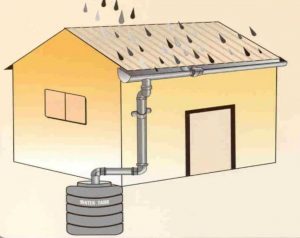Question 1 What are the two main techniques of rainwater harvesting?
Question 2 How is rain useful to us?
Question 3 Why is it essential to conserve water? What are the various ways in which you can conserve water?
Question 4 What is meant by rainwater harvesting?
Question 5 Describe methods of rain water harvesting ?
Question 6 Why ocean water is not fit for drinking , other domestic uses, agriculture and other needs?
Also Read NCERT Solutions for Chapter 14 Water
Contents
Groundwater
Most of the water on the earth is in oceans. The ocean water is highly saline (highly salty) due to which it cannot be used directly (for drinking, irrigation and in industry). Only a small fraction of water is available on the earth is fit for use by human beings, animals, and plants. This is available in rivers, lakes, ponds and as groundwater.
Availability of Ground Water
The groundwater is available everywhere but when it is used too much for agriculture and other purposes, the level of ground water decreases drastically and hence it cannot be used anymore.
As the population is increasing rapidly, the number of people using water is also increasing rapidly. Due to this, the demand for water is increasing day by day. Also more and more water is being used in agriculture for producing food and by the industries which manufacture a large variety of products for our use.
To conserve water means ‘to save water by using it carefully, wisely and by preventing its wastage. It is essential to conserve water because the amount of usable water on the earth is limited and there is scarcity of usable water for various purposes.
Various ways to conserve water or minimise the wastage of water at home
(1) Turn off the tap immediately after use. Get the leaking taps repaired immediately.
(2) Take bath by filling water in a bucket and not directly under the flowing tap.
(3) Wash the utensils by filling water in basin and not under the running tap.
(4) Use the water from washing rice, vegetables or fruits for watering the plants at home.
(5) Do not use a full flush from the cistern in the toilet when a half flush is sufficient.
Rainwater Harvesting
The activity of collecting rainwater directly and store it in big tanks for later use, or making the rainwater percolate into ground more efficiently to recharge the groundwater, is called rainwater harvesting.
The two main techniques of rainwater harvesting are:
(1) Collection and storage of rainwater in tanks for future use when there is scarcity of water, and
(2) To make rainwater percolate into the ground more efficiently by constructing percolation pits and recharge wells so as to recharge (or replenish) groundwater.
Rainwater harvesting can be done in two ways:
(1) Rooftop rainwater harvesting, and
(2) Rainwater harvesting from open spaces around buildings.
Rooftop Rainwater Harvesting
Rooftop rainwater harvesting can be done for two purposes:
(1) Collecting rainwater falling on roof and storing it in big tanks for later use.
(2) Collecting rainwater falling on roof and making it percolate into ground to recharge groundwater.
The rainwater collecting on the roof of a house is brought down-through rainwater pipe and collected in big underground tank made of concrete. This water may contain soil particles from roof and needs to be filtered before use. The stored rain water can be used in times of water scarcity.
In the second method of rooftop rainwater harvesting, the pipe bringing down rainwater collecting on the roof of a house (or building) goes directly into a percolation pit made in the ground. The percolation pit has a layer of broken bricks at the bottom; a layer of gravel in the middle and a layer of coarse sand at the top. It is covered by a concrete slab. A narrow bore (or hole) about 3 metres deep is dug into the ground. The outlet pipe coming out of percolation pit is put in this bore.
The rainwater which collects on the roof of a house is brought down by rainwater pipe into the percolation pit. This rainwater gets filtered by the sand, gravel and broken bricks in the percolation pit.
The filtered rainwater comes out of the percolation pit through the outlet pipe. The outlet pipe takes the rainwater deep into ground where it can easily seep into the soil. Whenever the depth of clay soil is more, rooftop rainwater harvesting to recharge groundwater is done through percolation pit with deep bore.
Rooftop rainwater harvesting collects only a small amount of rainwater at a time which can seep into the soil quickly through a percolation pit with a narrow bore. If rainwater harvesting is done from large, open spaces around buildings, then a very large amount of rainwater collects in a short period of time which cannot be absorbed into soil by a percolation pit with a narrow bore. A percolation pit with a wide recharge well is used.
Rainwater Harvesting From Open Spaces Around Buildings
The rainwater harvesting from open spaces around the buildings in a city is done by constructing percolation pits covered with concrete slabs having holes in them, and connected to a recharge well through a pipe. The rainwater falling in the open spaces around buildings goes into the percolation pit through the holes in its concrete slab cover. After filtration in percolation pit, rainwater enters the recharge well through the outlet pipe and gradually seeps into the soil.
The main purpose of rainwater harvesting is not to hold rainwater on the surface of earth but to make rainwater percolate under the ground more efficiently so as to recharge (or replenish) groundwater.
The advantage of rainwater harvesting is that it increases the availability of groundwater and helps in overcoming water shortage.
| Notes for Chapter 14 Water |

Please I need PDF of your notes
Very good information.